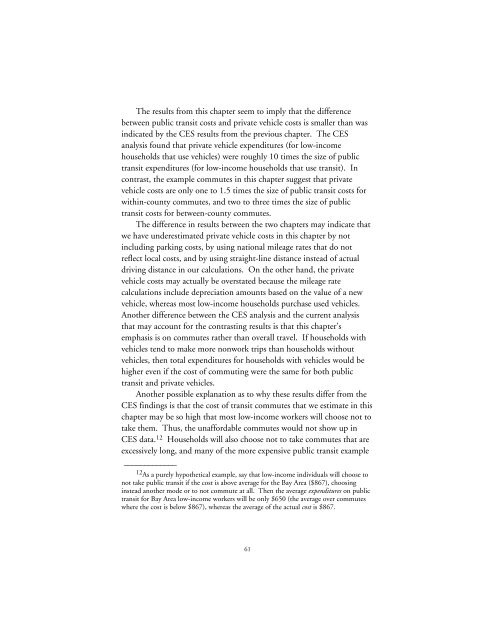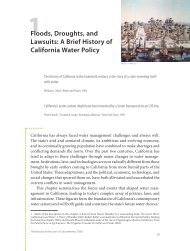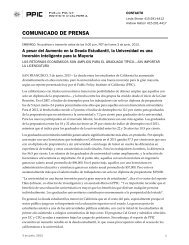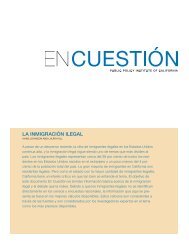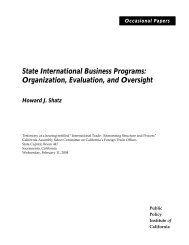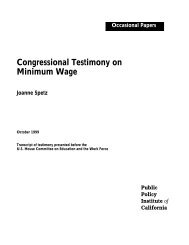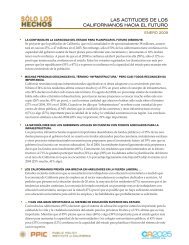Transportation Spending by Low-Income California Households ...
Transportation Spending by Low-Income California Households ...
Transportation Spending by Low-Income California Households ...
Create successful ePaper yourself
Turn your PDF publications into a flip-book with our unique Google optimized e-Paper software.
The results from this chapter seem to imply that the difference<br />
between public transit costs and private vehicle costs is smaller than was<br />
indicated <strong>by</strong> the CES results from the previous chapter. The CES<br />
analysis found that private vehicle expenditures (for low-income<br />
households that use vehicles) were roughly 10 times the size of public<br />
transit expenditures (for low-income households that use transit). In<br />
contrast, the example commutes in this chapter suggest that private<br />
vehicle costs are only one to 1.5 times the size of public transit costs for<br />
within-county commutes, and two to three times the size of public<br />
transit costs for between-county commutes.<br />
The difference in results between the two chapters may indicate that<br />
we have underestimated private vehicle costs in this chapter <strong>by</strong> not<br />
including parking costs, <strong>by</strong> using national mileage rates that do not<br />
reflect local costs, and <strong>by</strong> using straight-line distance instead of actual<br />
driving distance in our calculations. On the other hand, the private<br />
vehicle costs may actually be overstated because the mileage rate<br />
calculations include depreciation amounts based on the value of a new<br />
vehicle, whereas most low-income households purchase used vehicles.<br />
Another difference between the CES analysis and the current analysis<br />
that may account for the contrasting results is that this chapter’s<br />
emphasis is on commutes rather than overall travel. If households with<br />
vehicles tend to make more nonwork trips than households without<br />
vehicles, then total expenditures for households with vehicles would be<br />
higher even if the cost of commuting were the same for both public<br />
transit and private vehicles.<br />
Another possible explanation as to why these results differ from the<br />
CES findings is that the cost of transit commutes that we estimate in this<br />
chapter may be so high that most low-income workers will choose not to<br />
take them. Thus, the unaffordable commutes would not show up in<br />
CES data. 12 <strong>Households</strong> will also choose not to take commutes that are<br />
excessively long, and many of the more expensive public transit example<br />
_____________<br />
12 As a purely hypothetical example, say that low-income individuals will choose to<br />
not take public transit if the cost is above average for the Bay Area ($867), choosing<br />
instead another mode or to not commute at all. Then the average expenditures on public<br />
transit for Bay Area low-income workers will be only $650 (the average over commutes<br />
where the cost is below $867), whereas the average of the actual cost is $867.<br />
61


